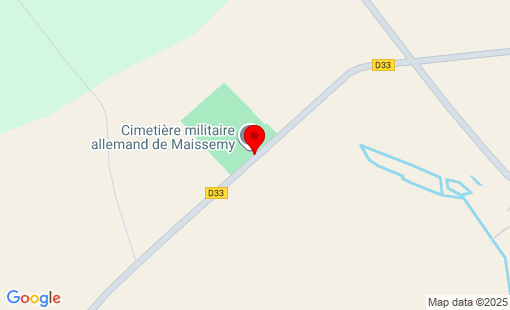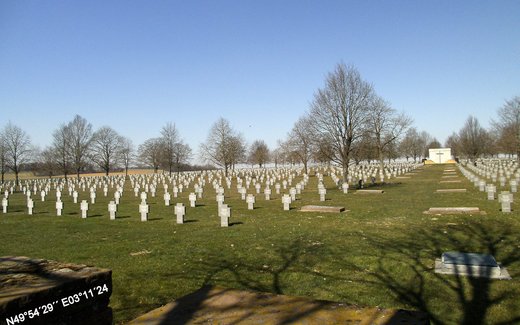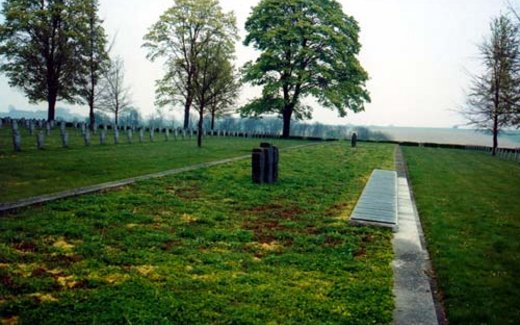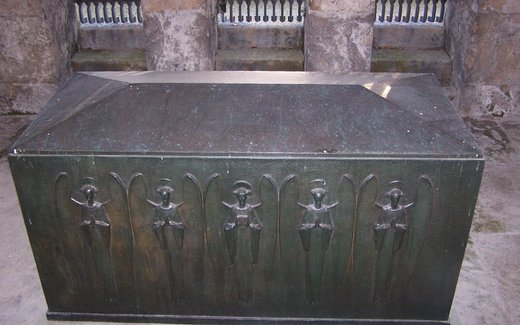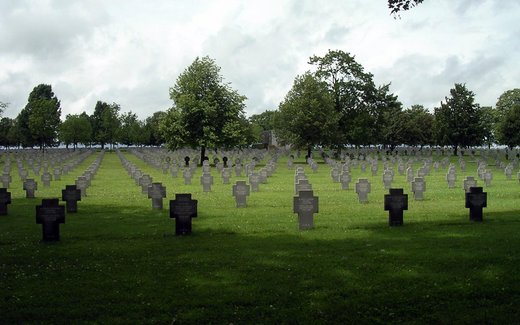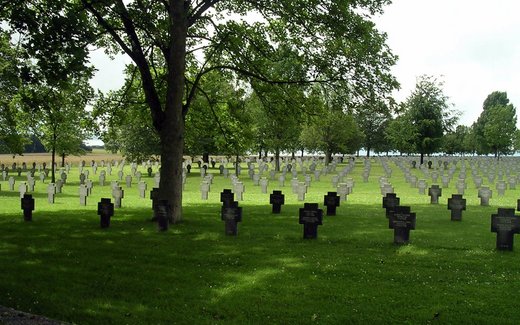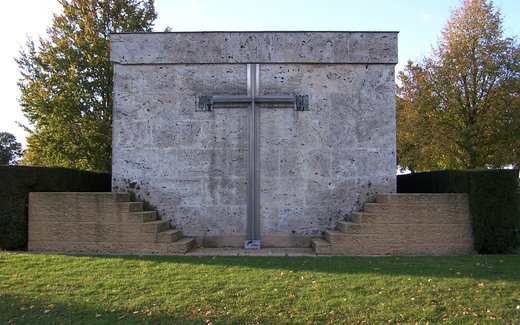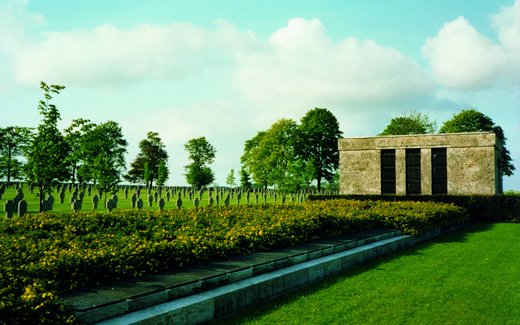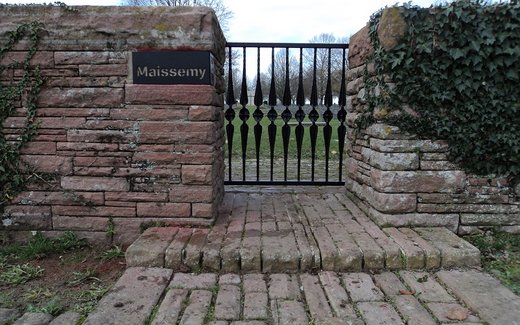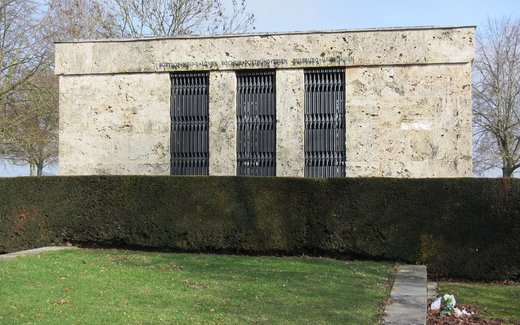The municipality of Maissemy in the department of Aisne is located just under ten kilometers
west-northwest of the town of St. Quentin. The Maissemy war cemetery,
located between the villages of Vermand and Bellenglise, can be reached via road D 33
d 33 road. 30,481 German war dead are buried at the cemetery
who lost their lives in the First World War.
Description of the cemetery
In 1924, the French military authorities had the German military cemetery
Maissemy military cemetery. After Neuville-St. Vaast near Arras with 44,833
Dead, it is the second largest German war cemetery of the First World War in France
in France. On the basis of the Franco-German War Graves Agreement
of 1966, the Volksbund Deutsche Kriegsgräberfürsorge e. V. (German War Graves Commission) took over the final
German military cemeteries from the First World War in France
in France. From 1964, participants in the Volksbund's youth camps
Youth camps of the Volksbund from North Rhine-Westphalia worked on the leveling and
And planting the graves. in 1972, work began on replacing the existing
Wooden grave markers with crosses made of Belgian granite, which inscribed the names and
The names and dates of the buried. The cemetery contains 15,481 war dead
in individual graves; 75 of them remain unknown. The graves of dead soldiers
of Jewish faith were given a gravestone made of natural stone for religious reasons
Natural stone. It reads in Hebrew script "Here rests buried ..." and
"May his soul be included in the circle of the living". 15.000 dead are buried
are buried in two common graves. Of these, only 967 are known by name
known by name. Their names are documented on metal plaques attached to the walls surrounding
of the two common graves. In the course of designing the
War cemetery, these walls were completely renewed. In addition, a
landscaping of the site. The maintenance service of the
Volksbund looks after the cemetery on a permanent basis.
History
When the Maissemy war cemetery was created, the French authorities buried war dead
Authorities buried war dead from 124 communal areas as well as from provisional graves
provisional gravesites created during the fighting within a radius of 30 kilometers
around the current war cemetery. Most of those buried here
lost their lives in the three battles of the Somme. In each case
almost half of the soldiers died in the battles from the end of June to November 1916 and
in the "Great Battle of France" in the spring and summer of 1918
the latter was an unsuccessful attempt by the German Empire to achieve a favorable
to bring about a favorable outcome of the war for the Central Powers. From 1929
the Volksbund undertook work to improve the cemetery grounds; an agreement with the
This was made possible by an agreement with the French military authorities. Several
Hundreds of trees and shrubs were planted, as well as more than 70,000 lavender
Lavender plants to green the bare cemeteries. The
The communal graves were planted with 8,000 wild roses and given stone borders
Borders made of stone. A new entrance with enclosing walls was created at the
the street front and a central path. The latter is flanked on both sides by large
Stone slabs on both sides. Inscribed in the form of lead inlays, these slabs bear the names and coats of arms
the names and coats of arms of the towns in the Ruhr region that sponsored the cemetery at the time
for the cemetery. The Ruhr towns also contributed financially to the final
Ruhr towns in turn contributed financially to the final expansion. In the interwar period, due to a lack of
lack of foreign currency until the outbreak of the Second World War in 1939, which
Work was no longer possible, it was not possible to permanently mark the graves
be achieved.
Special feature
In the period from 1934 to 1935, the Volksbund had a memorial erected in the middle of the
Cemetery, between the two large communal graves, a memorial hall made of golden yellow
made of golden yellow tuff quarried in the foothills of the Alps. Artfully
forged heavy bronze grilles close off the passages in the hall, in which a bronze sarcophagus
hall, which contains a bronze sarcophagus with a frieze of angels. The building's vaulted mosaic ceiling
more than 340,000 tiles were used for the building's vaulted mosaic ceiling. The inauguration of the
Memorial hall took place on July 12, 1935.
